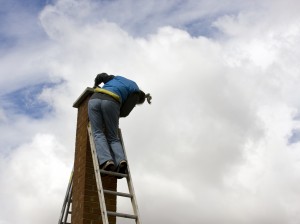Aside from Santa Claus and a few brave cat burglars, few people actually see the inside of a chimney. Damage on the inside of your chimney that goes unnoticed and untreated for an extended period of time can greatly compromise the overall integrity of the chimney as well. For this reason alone, getting an annual comprehensive chimney inspection is an absolute must.
The National Fire Protection Association (NFPA) develops, publishes and disseminates more than 300 consensus codes and standards intended to minimize the possibility and effects of fire and other risks. One code in particular, NFPA 211, is the industry standard upon which upon which certified chimney sweeps base their services. The code was written to provide for the reduction of fire hazards by ensuring the safe removal of flue gases, the proper installation of solid fuel-burning appliances, and the correct construction and installation of chimneys, fireplaces, and venting systems.

The more you know about the different levels of inspection involved in ensuring the maximum operation of your chimney, the better informed your decisions will be.
The NFPA and Chimney Safety Institute of America (CSIA) classify chimney inspections as Level 1, Level 2, or Level 3. Each level of inspection covers specific items depending on the individual appliance and how it is vented. Let’s look at all three levels and what’s completed during each.
A Level 1 inspection is completed during each chimney cleaning. It is the recommended level when the conditions of use are not changing. This is a more routine evaluation, one that you should have carried out annually. Level 1 inspections are limited to the portions of the chimney exterior and interior that are easily accessible as well as the portions of the fireplace and chimney connection that are readily accessible. The technician will be looking to gauge the basic soundness of the flue and chimney structure as well as your basic fireplace installation and connections. The technician will also check to make sure the chimney is free of obstructions and combustible deposits.
A Level 2 inspection is more detailed and thorough than a Level 1 inspection and is recommended either when the conditions of use are changing or when a Level 1 inspection reveals an issue that warrants a more detailed inspection. A few examples of issues that may call for a more in-depth inspection are when a homeowner opts to switch convert his or her traditional fireplace to a gas unit or when an event has occurred that possibly could have caused damage to the chimney (e.g., a chimney fire or earthquake). It’s also recommended upon the sale or transfer of the property. Level 2 inspections include everything a Level 1 inspection includes as well as the inspection of accessible areas of the attic, basement, and crawlspace and a video evaluation of the inside of your chimney.
A Level 3 inspection is the most in-depth of all the inspection types and is conducted after a Level 1 or Level 2 inspection reveals an issue hidden in parts of the chimney and/or flue. It’s important to note that examination of concealed areas will be limited to areas reasonably suspected of containing hazards that can’t be evaluated otherwise. A Level 3 inspection includes all of the areas covered in a Level 1 and Level 2 inspection as well as inspection of concealed areas to investigate known or suspected problems. Because certain portions of a Level 3 inspection require destructive action to your home, the technician will discuss these areas with the homeowner prior to the inspection.
As you can see, chimney inspections are no small undertaking. They are extremely important for homeowners, too. Ensuring that your chimney and all of the components attached to it are in prime operating condition will provide you with many years of heating enjoyment. Having your chimney inspected annually will help to ensure that Santa has a clear pathway and that happy ho-ho-homeowner for many years to come.
